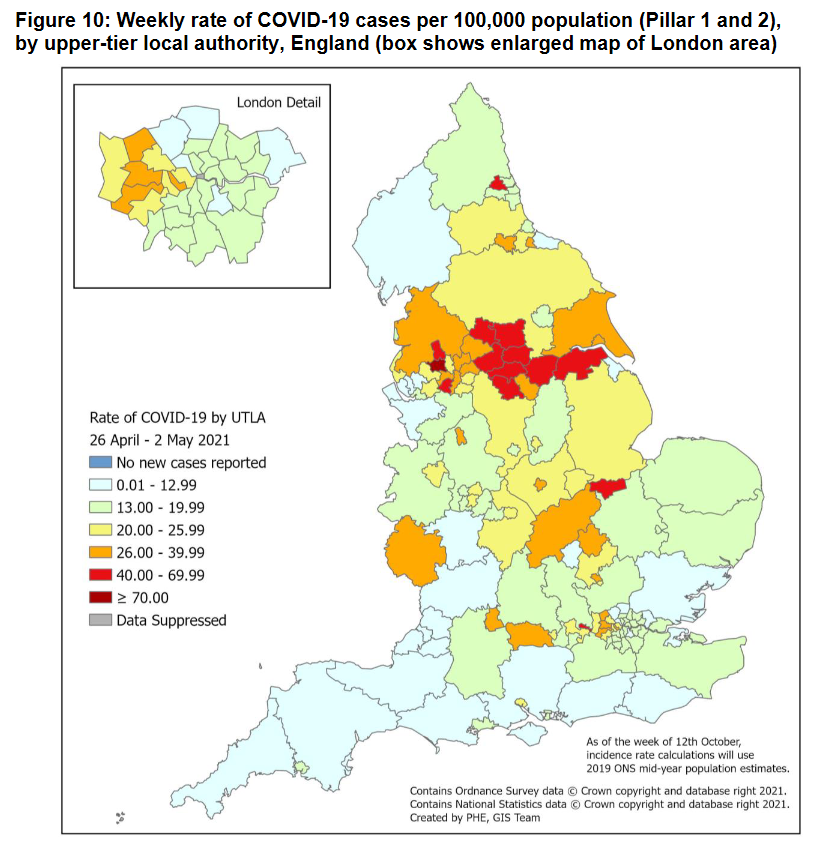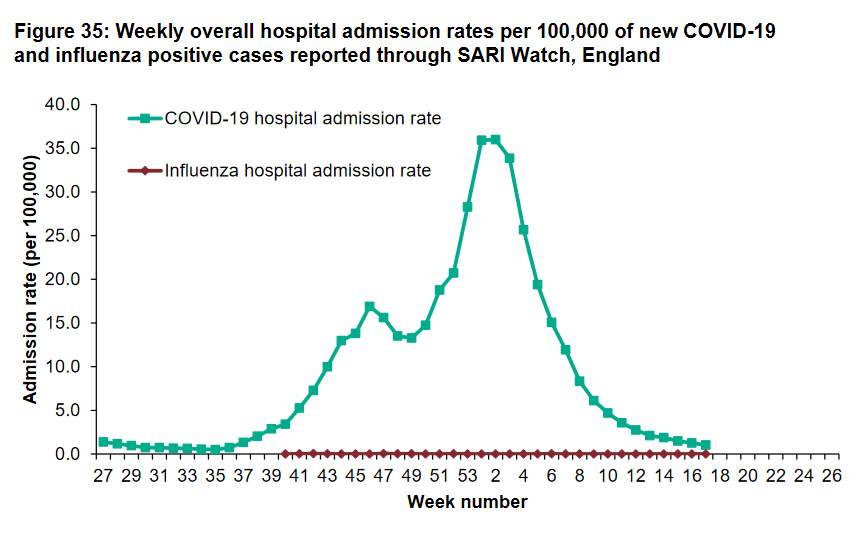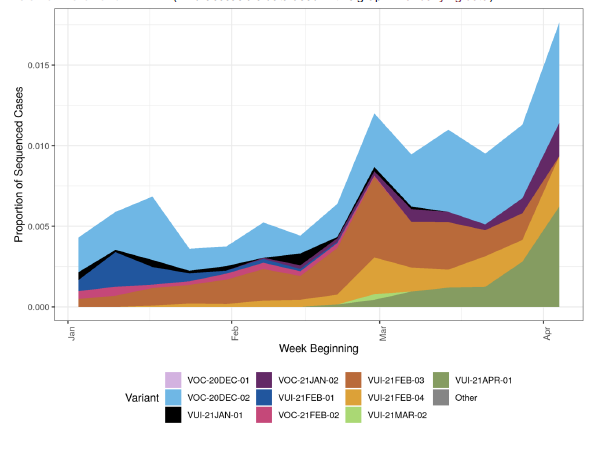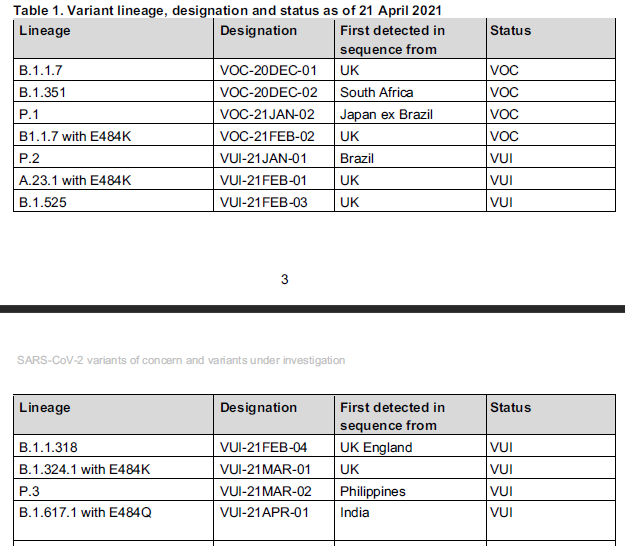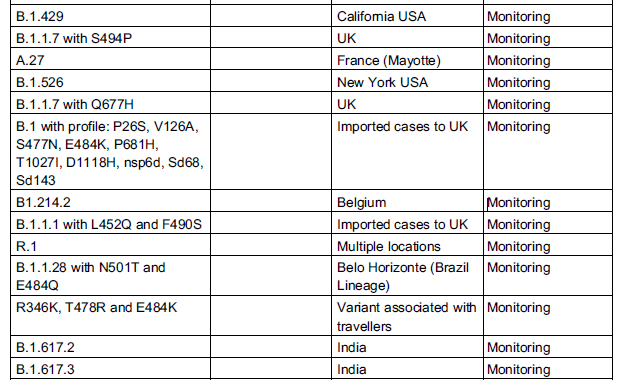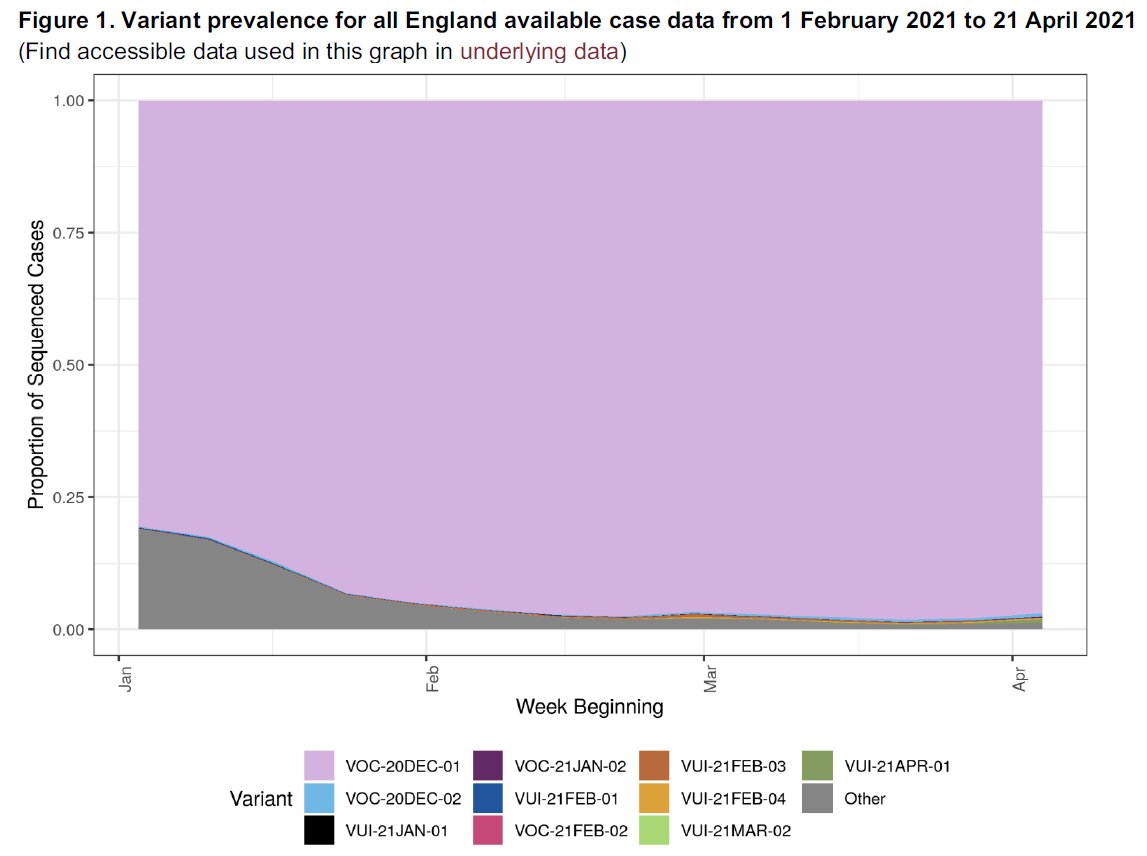
VARIANTS update for the UK from PHE data released today (delayed from yesterday due to the local elections).
P.1.617.2 declared a Variant of Concern (in orange bold on the charts). Significant increase in cases.
Cumulative charts that can be affected by surge testing etc.
P.1.617.2 declared a Variant of Concern (in orange bold on the charts). Significant increase in cases.
Cumulative charts that can be affected by surge testing etc.

Here is the data on an exponential chart.
P.1.617.2 declared a Variant of Concern (in orange bold on the charts). Significant increase in cases. This chart includes the B.1.1.7 'Kent' variant.
Cumulative charts that can be affected by surge testing etc.
P.1.617.2 declared a Variant of Concern (in orange bold on the charts). Significant increase in cases. This chart includes the B.1.1.7 'Kent' variant.
Cumulative charts that can be affected by surge testing etc.

Here is the data on a heatmap showing new cases detected each week. Variants of concern highlighted.
P.1.617.2 is around 4.4% of the variant cases.
This ratio was around 2.3% last week (which included all cases to that time recorded last week)
P.1.617.2 is around 4.4% of the variant cases.
This ratio was around 2.3% last week (which included all cases to that time recorded last week)

It is clear that P.1.617.2 is of concern and it seems appropriate that PHE has designated it as such.
I will update this thread once the technical report is released.
I will update this thread once the technical report is released.
( Just a correction to my first tweet - this is *B*.1.617.2 )
(Just a correction - this is *B*.1.617.2)
Here is the statement from Public Health England
(VUI-21APR-02 is another name for B.1.617.2, one of the variants first detected in India)
gov.uk/government/new…
(VUI-21APR-02 is another name for B.1.617.2, one of the variants first detected in India)
gov.uk/government/new…

From the PHE statement on B.1.617.2:
"almost half the cases are related to travel or contact with a traveller"
Which suggests that over half are not (yet) related to travel or contact with a traveller.
"almost half the cases are related to travel or contact with a traveller"
Which suggests that over half are not (yet) related to travel or contact with a traveller.
The technical briefing has now been published. I will update this thread with my commentary.
assets.publishing.service.gov.uk/government/upl…
assets.publishing.service.gov.uk/government/upl…
PHE have issued their latest briefing. This shows why B.1.617.2 (also called VOC-21APR-02) has been classified as a Variant of Concern.
This is mainly justified on transmissibility.
"Transmissibility appears greater than wild-type SARS-COV-2 ...
This is mainly justified on transmissibility.
"Transmissibility appears greater than wild-type SARS-COV-2 ...
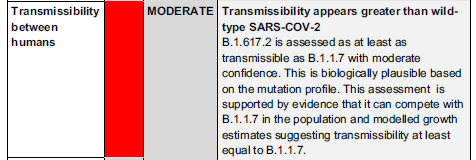
" ... B.1.617.2 is assessed as at least as transmissible as B.1.1.7 with moderate confidence. This is biologically plausible based on the mutation profile. This assessment is supported by evidence that it can compete with B.1.1.7 in the population and modelled growth estimates...
" ... suggesting transmissibility at least equal to B.1.1.7."
There are also *LOW CONFIDENCE* concerns in relation to susceptibility and immunity from natural infection
There are also *LOW CONFIDENCE* concerns in relation to susceptibility and immunity from natural infection

However, *IMPORTANTLY*
"There are insufficient data as yet to assess reinfection or vaccine effectiveness through national surveillance."
"There are insufficient data as yet to assess reinfection or vaccine effectiveness through national surveillance."
You can see the increase in prevalence of B.1.617.2 (VOC-21APR-02) in this chart where purple/lilac is B.1.617.2 

This is the regional breakdown of the proportion of cases that are B.1.617.2 in each region.
However, cases in the South West are very low, and these are predominanty related to travel.
London appears to be an issue.
However, cases in the South West are very low, and these are predominanty related to travel.
London appears to be an issue.

Many of these cases are still 'under investigation' (in grey), therefore not (yet) associated with travel or contacts of travellers. 

This is the breakdown of where B.1.617.2 has been detected - London; north-west; midland towns; Bristol area.
"Ratio values >1 indicate an increased risk and values <1 indicate lower risk."
Circled areas show the areas where this is statistically significant.
"Ratio values >1 indicate an increased risk and values <1 indicate lower risk."
Circled areas show the areas where this is statistically significant.

Once again, many thanks to the hard work of @PHE_uk and the groups that support the analysis. 

*relative prevalence
• • •
Missing some Tweet in this thread? You can try to
force a refresh




